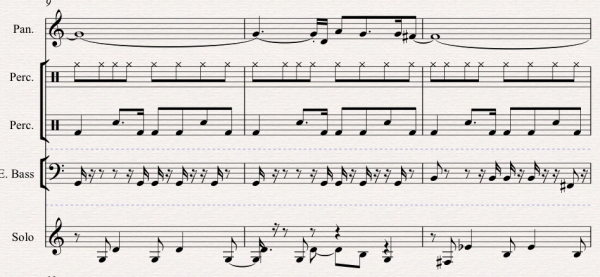If you are a musician who is hired for weddings and other events you are probably asked to cover popular songs. Many of these are so ubiquitous that charts for them are readily available in “Real Books” and “Best of the Decade” collections.
But your customers have a wide range of musical tastes. While you may charge extra for obtaining the sheet music for their request, sometimes it is either not readily available or you need it arranged for a particular combination of instruments (e.g., string quartet, violin and guitar, etc).
If your usual method of arranging a pop song is to play the mp3 or YouTube video over and over while you attempt to transcribe what’s being played, here are a couple of helpful hints:
If you are using one of the professional music notation applications such as Finale or Sibelius, you are probably aware that you can connect a MIDI instrument and use it to enter notes by playing them. However, you may not be aware that most of these apps can also open a pre-existing MIDI file as a notated score of its various “voices”!
And fortunately there are tons of MIDI arrangements of popular songs available to download on the web – people create them for doing karaoke or just for the fun of it. They have already spent long hours listening to the original and “transcribing” to their MIDI keyboards using various voices. Granted, not everyone creates a good arrangement so you will want to listen to a few before choosing which to download: Google title artist midi
Once you have the .mid file on your computer open it with your notation program – either right-click on it and “open with” the application, or start the program first then use File->open (or import) to point to the .mid file.
The application will probably give you a window asking you to select various parameters it should use when reading in the MIDI file. You can experiment with these until you get a decent-looking score as a result, e.g., if it asks what is the shortest note duration to use you can start with a 16th note.
Of course once you open the MIDI file your work is only beginning! Here’s part of the import of a MIDI file of Radiohead’s “Creep” to Sibelius:
The MIDI channels contained in the file vary depending on where you look in the song. here we have “solo” which uses a piano sound, bass guitar, various percussion, and “Pan.” which is a panpipe sound used to emulate the vocal part.
You still need to make your own arrangement for your specific needs and instrumentation, but you are already miles ahead because you don’t need to transcribe all of this by ear first!
If you don’t own a notation program that can import MIDI files, you can still make transcribing by ear somewhat easier by downloading and installing Audacity, the free audio manipulation program available for almost all platforms (PC, Mac, Linux and more).
Assuming you have an audio file of the song to transcribe (MP3, WAV, AIFF):
1. Start Audacity and use File->Open to open the audio file
2. Use Edit->Select All to select the entire waveform
3. Choose Effect->Change Tempo. This brings up a window where you can choose to slow down the song by some percent (I suggest no more than 25%) without changing the pitch. Make your choice and have it change the file.
4. Now your song is slower so you can hear the parts more easily. If you want to only work on one section at a time, you can click and drag to highlight that part of the waveform. If you want to loop that segment (so that it plays repeatedly) hold down your Shift key while hitting the Play button.
Good luck!

